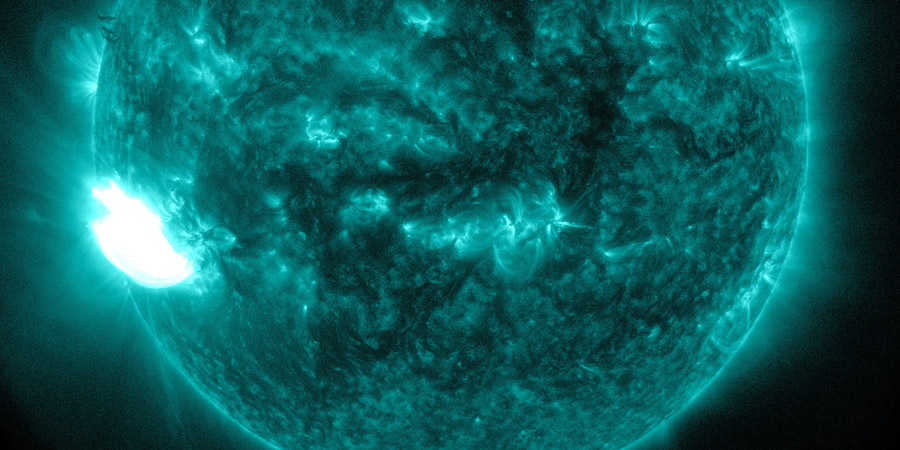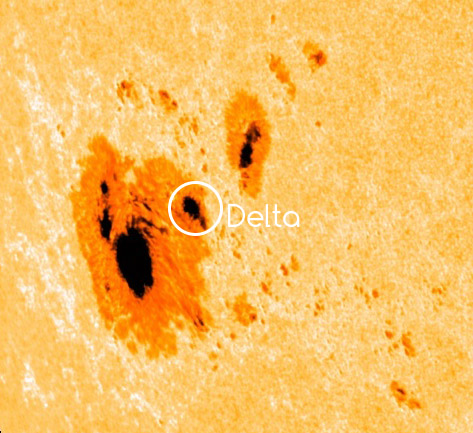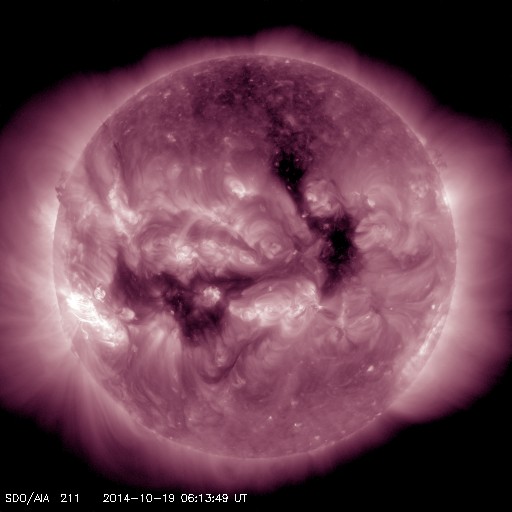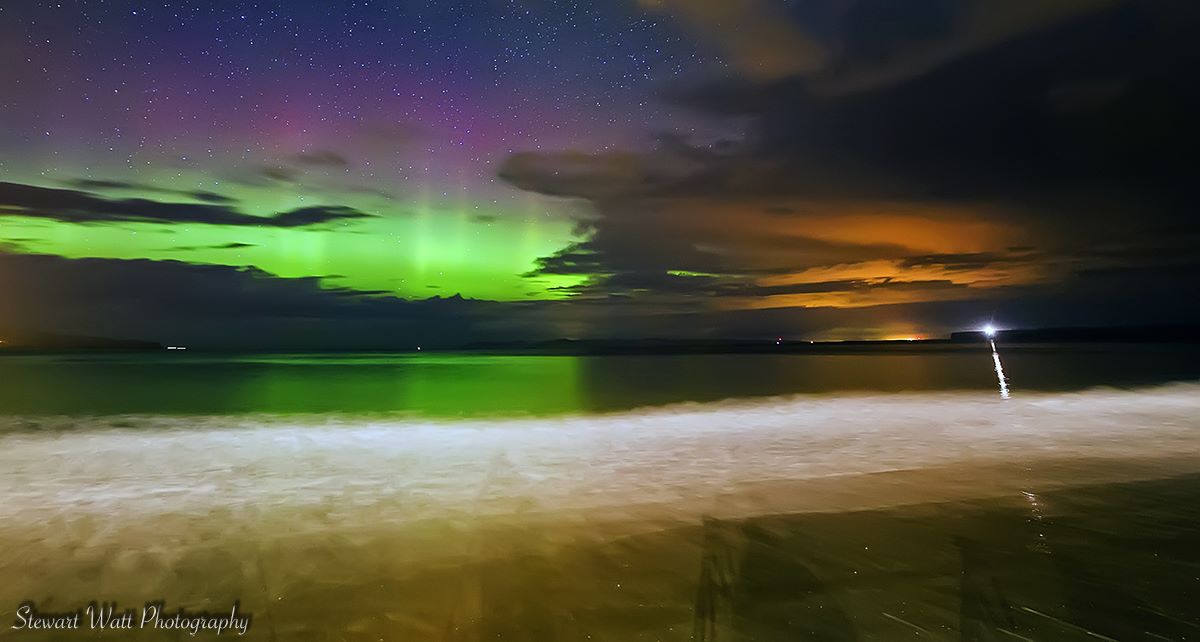X1.1 solar flare from sunspot region 2192
Sunday, 19 October 2014 05:49 UTC

Sunspot region 2192 produced a major X1.10 solar flare (R3-strong radio blackout) at 05:03 UTC. This was the first X-class solar flare since 10 September 2014 and the 28th strongest solar flare of the current solar cycle.
Coronagraph imagery is not yet available to confirm the launch of a coronal mass ejection but the lack of any significant coronal dimming (traces in the solar corona of ejected material) suggest there might not be a major coronal mass ejection associated with this event despite the long duration of the solar flare. This sunspot region is also not yet in a great position for any eruptions to be earth-directed but we need to wait for coronagraph imagery from SOHO to confirm if there was an eruption and it's exact trajectory.
Sunspot region 2192 analysis
Sunspot region 2192 has been relativly stable the past 24 hours and a significant delta structure remains present. It gained a few new spots north of the large umbral core but the sunspot region itself didn't change very much. More M-class solar flares are likely as long as this strong delta structure remains. Another X-class event can not be ruled out as well. Sunspot region 2192 will now rotate more and more into geo-effective position until it is at the center of the earth-facing disk in about six days from now. Any future eruptions in the coming days will thus have a larger chance that it comes towards Earth.

Image: NASA SDO.
NOAA SWPC alerts
ALERT: X-Ray Flux exceeded M5 Threshold Reached: 2014 Oct 19 0440 UTC NOAA Scale: R2 - Moderate
SUMMARY: X-ray Event exceeded X1 Begin Time: 2014 Oct 19 0417 UTC Maximum Time: 2014 Oct 19 0503 UTC End Time: 2014 Oct 19 0548 UTC X-ray Class: X1.1 Location: S15E55 NOAA Scale: R3 - Strong
Coronal mass ejection update (ADDED 12:05 UTC)
As we feared, the X1.1 solar flare of this morning was not an eruptive event despite the long duration. Imagery from SOHO/LASCO shows that this event did not launch a coronal mass ejection.
Coronal holes facing Earth
A whole diffrent topic but perhaps just as interesting for aurora watchers. Two coronal holes are now in Earth-facing position and are sending enhanced solar wind streams towards Earth. No geomagnetic storming is expected the coming week but isolated intervals of active geomagnetic conditions (Kp4) will be possible as the effects from these coronal holes could last for a while.

The solar wind conditions right now are actually also slightly above background levels and this caused unsettled geomagnetic (Kp3) conditions last night. Aurora displays have been reported from Scandinavia and northern Scotland. The image below was taken last evening by Stewart Watt from Scotland. Amazing!

Thank you for reading this article! Did you have any trouble with the technical terms used in this article? Our help section is the place to be where you can find in-depth articles, a FAQ and a list with common abbreviations. Still puzzled? Just post on our forum where we will help you the best we can!
Latest news
Latest forum messages
Support SpaceWeatherLive.com!
A lot of people come to SpaceWeatherLive to follow the Sun's activity or if there is aurora to be seen, but with more traffic comes higher server costs. Consider a donation if you enjoy SpaceWeatherLive so we can keep the website online!

Space weather facts
| Last X-flare | 2025/03/28 | X1.1 |
| Last M-flare | 2025/04/18 | M4.4 |
| Last geomagnetic storm | 2025/04/16 | Kp8- (G4) |
| Spotless days | |
|---|---|
| Last spotless day | 2022/06/08 |
| Monthly mean Sunspot Number | |
|---|---|
| March 2025 | 134.2 -20.4 |
| April 2025 | 120.1 -14.1 |
| Last 30 days | 116.4 -25.9 |


